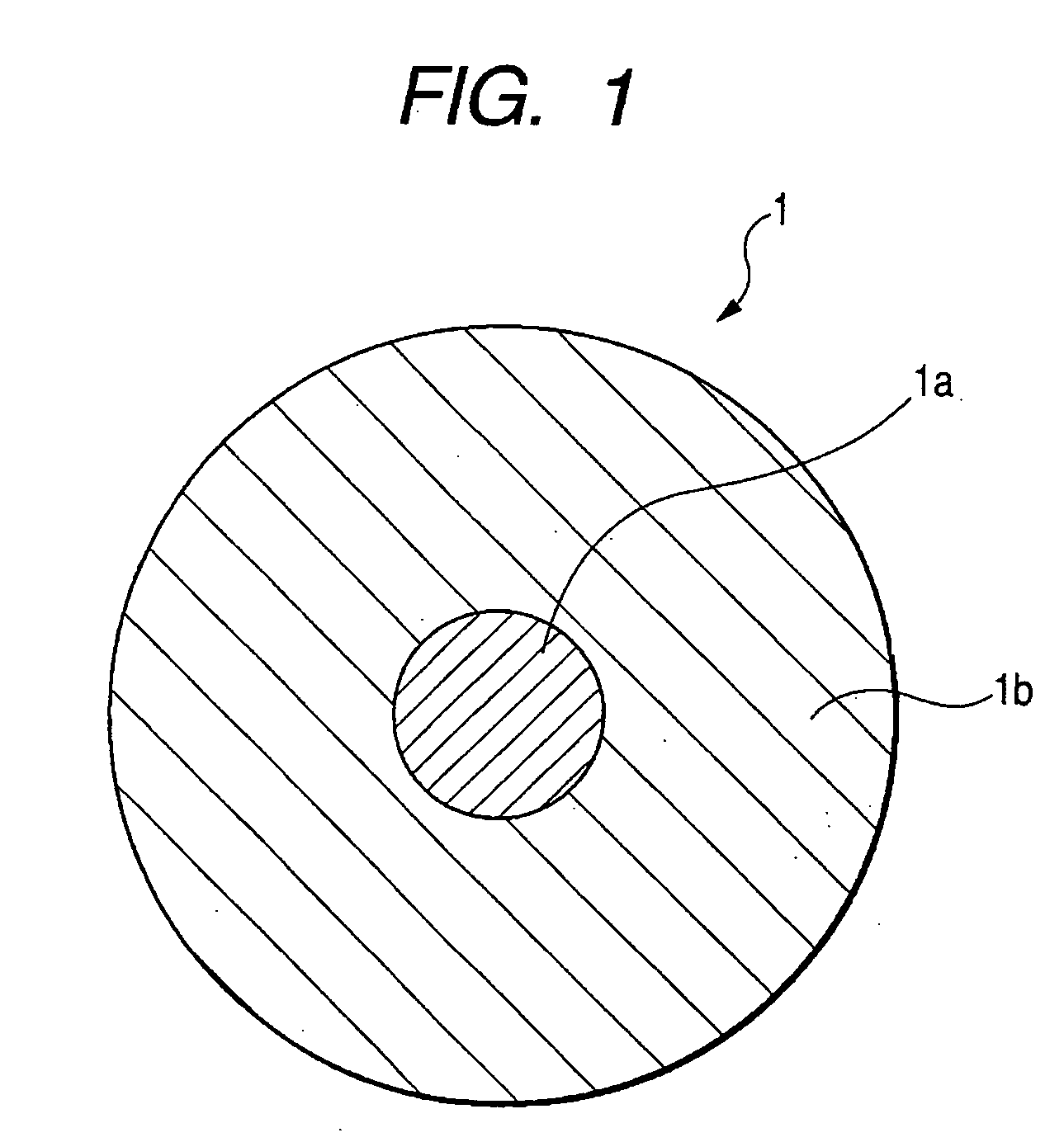Electroconductive rubber roller
a technology of electroconductive rubber and roller, which is applied in the direction of manufacturing tools, portable power-driven tools, instruments, etc., can solve the problems of difficult to achieve stable volume resistivity, difficult to provide electroconductive rubber rollers of desired performance in a stable manner, uneven charging density of photosensitive components, etc., to achieve excellent permanent compression strain resistance, low hardness, and low electrical resistance
- Summary
- Abstract
- Description
- Claims
- Application Information
AI Technical Summary
Benefits of technology
Problems solved by technology
Method used
Image
Examples
examples
[0052] In the following, the present invention will be described further by examples thereof, but the present invention is not at all limited by such examples, in which “part” means part by mass.
[0053]
[0054] Epichlorohydrin-based rubbers of desired composition ratios were obtained by an ordinary solution polymerization, utilizing ethylene oxide, epichlorohydrin and allyl glycidyl ether in monomer compositions shown in Table 1. Also rubbers with different crystallinities were prepared by a temperature control of a heater provided in a polymerization reactor (autoclave), thereby controlling the proceeding of the polymerization reaction.
[0055]
[0056] Following components were kneaded in a closed kneader and open rolls to obtain an unvulcanized rubber composition:
Epichlorohydrin-based rubber (A to G) obtained100partsby the above-mentioned methodZinc oxide [trade name: Zinc Oxide Jis2,5partsmanufactured by Hakusui Tech Co.]Stearic acid [trade name: stearic acid S,1partmanufactured by ...
PUM
| Property | Measurement | Unit |
|---|---|---|
| enthalpy | aaaaa | aaaaa |
| enthalpy | aaaaa | aaaaa |
| volume resistivity | aaaaa | aaaaa |
Abstract
Description
Claims
Application Information
 Login to View More
Login to View More - R&D
- Intellectual Property
- Life Sciences
- Materials
- Tech Scout
- Unparalleled Data Quality
- Higher Quality Content
- 60% Fewer Hallucinations
Browse by: Latest US Patents, China's latest patents, Technical Efficacy Thesaurus, Application Domain, Technology Topic, Popular Technical Reports.
© 2025 PatSnap. All rights reserved.Legal|Privacy policy|Modern Slavery Act Transparency Statement|Sitemap|About US| Contact US: help@patsnap.com


